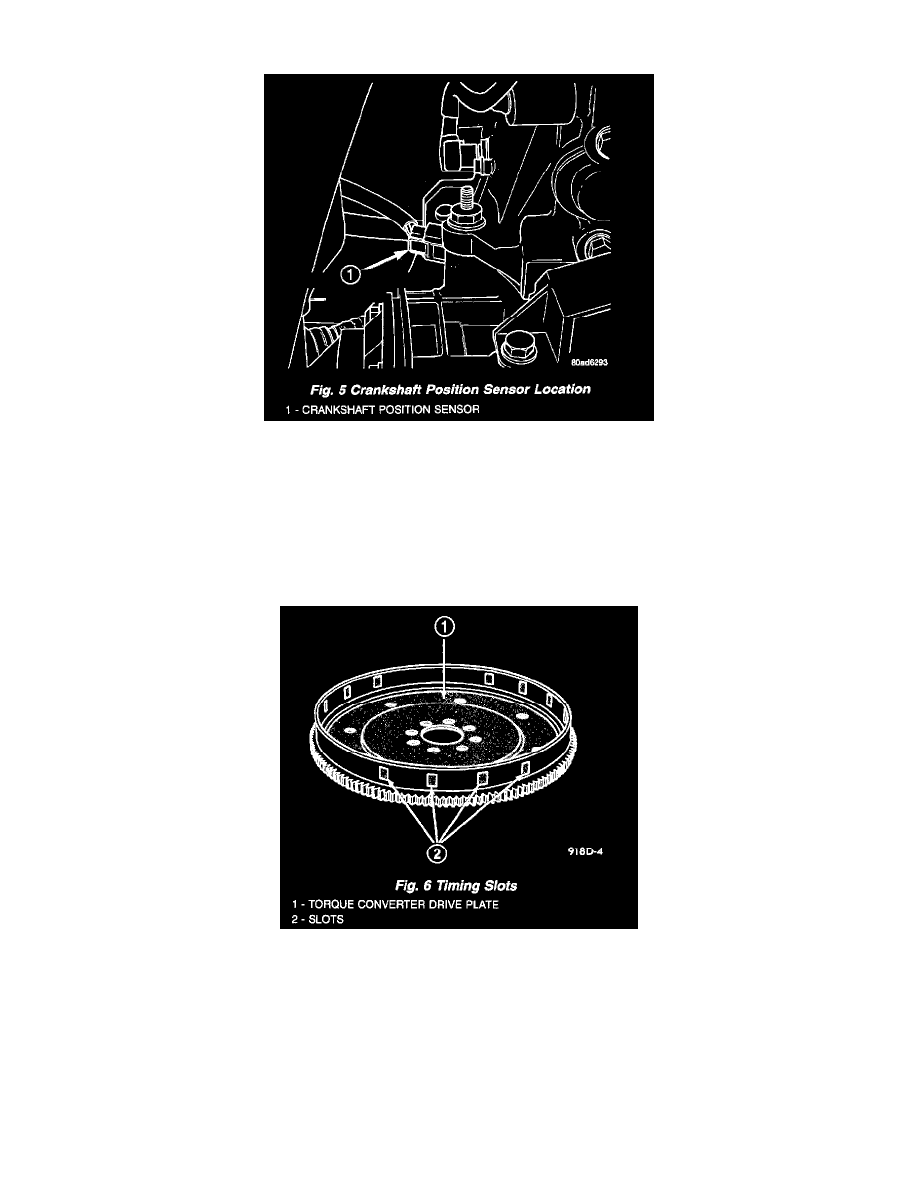Concorde V6-2.7L VIN V (2001)

Crankshaft Position Sensor: Description and Operation
Fig. 5 Crankshaft Position Sensor Location
The crankshaft sensor is located on the passengers side of the transmission housing, above the differential housing . The bottom of the sensor is
positioned next to the drive plate.
The sensor is a hall effect device combined with an internal magnet. It is also sensitive to steel within a certain distance from it.
Engine speed and crankshaft position are provided through the crankshaft position sensor. The sensor generates pulses that are the input sent to the
powertrain control module (PCM). The PCM interprets the sensor input to determine the crankshaft position. The PCM then uses this position, along
with other inputs, to determine injector sequence and ignition timing.
Fig. 6 Timing Slots
The crankshaft position sensor detects slots cut into the transmission driveplate extension. There are 3 sets of slots. Two sets contain 4 slots and one set
contains 5 slots, for a total of 13 slots. Basic timing is set by the position of the last slot in each group. Once the Powertrain Control Module (PCM)
senses the last slot, it determines which piston will be next at TDC from the camshaft position sensor input. It may take the PCM one engine revolution
to determine crankshaft position.
The PCM uses crankshaft position reference to determine injector sequence and ignition timing. Once the PCM determines crankshaft position, it begins
energizing the injectors and coils in sequence.
The PCM uses the Crankshaft Position sensor to calculate the following:
-
Engine rpm
